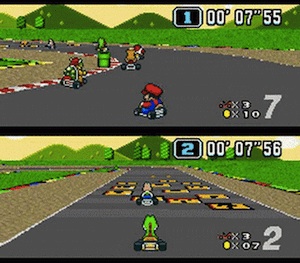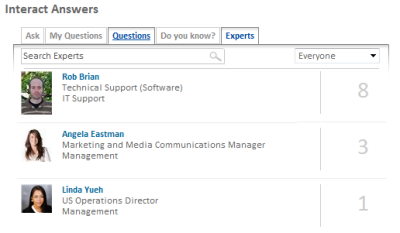The power of ‘Game Theory’… in your intranet?
Remember hitting the arcades when you were a kid and seeing someone’s name or initials flashing away on the scoreboard of the pinball machine or Frogger? Or setting track records on Mario Kart on the Super Nintendo so that your name flashed at the top of the screen?
 For me it was a challenge. I wanted my initials flashing at the top as I knew my friends played the same game. It was rewarding when I achieved this, kept me engaged with the game so I kept playing, and quite a buzz!
For me it was a challenge. I wanted my initials flashing at the top as I knew my friends played the same game. It was rewarding when I achieved this, kept me engaged with the game so I kept playing, and quite a buzz!
Why is this relevant you ask?
Well, in today’s world many companies are using game theory or ‘gamification‘ within technology in many fields including health, social and education to drive user adoption by making technology more engaging and appealing, where traditionally it may have lacked appeal.
The use of badges, leader-boards, incentives and rewards within these applications are using gamification to drive usage and sustain momentum. They try to entice people to re-use an application over and over by tapping into their competitive and inquisitive natures.
In education these types of projects have been launched to reward students. For example, receiving ‘on target’ badges or ‘reading points’ creating leader boards for the students.
 In the social world, applications such as the ‘Friend Report Card’ for Facebook make it really easy to list all friends in a leader-board based on the number of ‘Likes’ and ‘Comments’ they have generated around an individual’s posts.
In the social world, applications such as the ‘Friend Report Card’ for Facebook make it really easy to list all friends in a leader-board based on the number of ‘Likes’ and ‘Comments’ they have generated around an individual’s posts.
Foursquare is also an excellent example of an application using gamification to drive on-going usage as members gain new badges and earn points.
So how does this apply to the intranet world?
To start, most modern intranets (like Interact Intranet – shameless plug) already have the essential ingredients including:
- Lots of employees and information about them
- Different ways of categorising people (departments, groups, locations, job roles, social circles, teams)
- A recorded history of activity (i.e. comments posted, activity, questions asked, documents viewed etc etc)
- Applications and usage stats
What can you do with this data is the key question. Many intranet companies, including us here at Interact, have been continually looking at ways of introducing elements of gamification that will assist in user adoption and continued momentum of usage.
After all that’s the ultimate goal – usage and adoption. An intranet has multiple purposes for different people but for those managing the application they want success, which instant and continued usage is a crucial factor.
So, what are examples of ‘gamification’ in intranets?
The classic example is Sabre, an international travel company. In 2008 on their self-built intranet they launched a concept of Karma Points for contributing and answering questions, with great success.
Another example is Idea Street, a project by the UK based Department of Work and Pensions which uses employee idea submission (ideation) combined with leader boards to drive employee engagement and share ideas.
In Interact Intranet we have introduced leader boards for our recently launched Interact Answers tool.
We’ve found this simple idea has really gained traction with our clients’ users desperate to see their names at the top of the board, for answering the most questions.
Gamification is not only used to assist in continued usage and adoption but can be also used for other purposes such as an intranet launch. Romec Ltd used an innovative game to launch their intranet with huge success.
At a wider scale, positive contribution to intranets by employees can overlap into many areas including HR. For example, a manager in an organisation may look at an employees’ intranet contribution such as ‘questions answered’ as part of their yearly review.
There’s no doubt these types of tools have to be introduced with careful consideration by intranet teams. There is definitely a ‘cultural fit’ issue and some companies will have more success than others.
However the trend is continuing. Gartner saysby 2015, more than 50 percent of organisations that manage innovation processes will gamify those processes.
In summary gamification can definitely have a positive impact on today’s modern intranets. Used and managed carefully this type of technology can really benefit an organisation by driving innovation, connecting employees and reinforcing a company’s culture.
